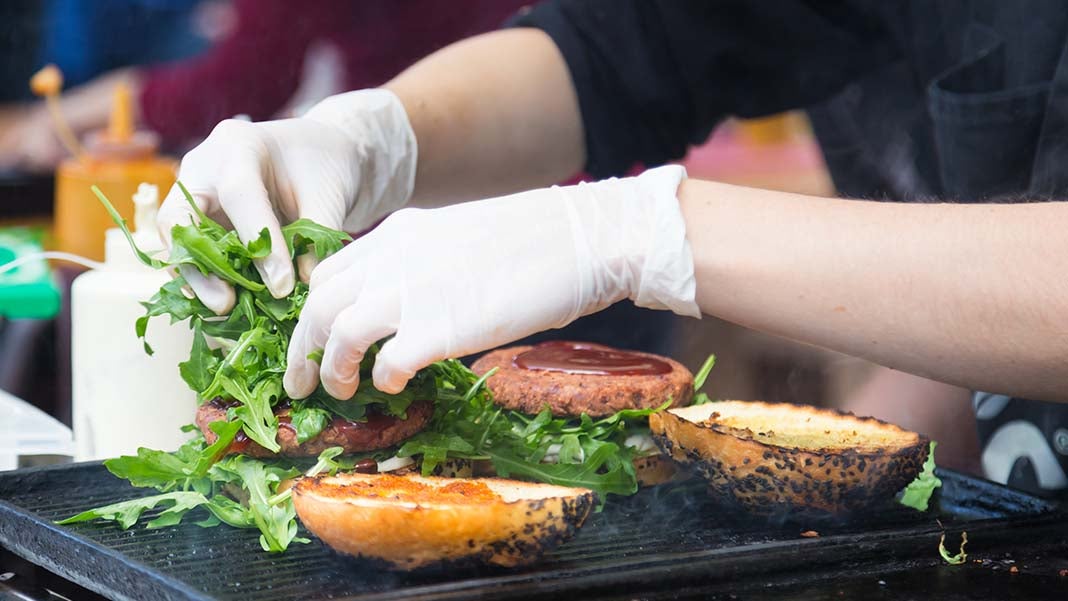
Food trucks and carts have come a long way since the days of greasy ‘roach coaches’. People generally have more refined tastes and higher expectations nowadays.
The trendy reinvention of fast-food culture seen in recent years has triggered a boom in a market that you can enter without huge investment or extensive catering experience.
In 2009 New York magazine said the humble food truck had “largely transcended its roach-coach classification and is now a respectable venue for aspiring chefs to launch careers.”
So what are the key considerations when buying into the mobile food business?
1. Business model: truck or cart?
Basic food carts are the low-cost option in a low-cost sector. Tight on space they require a creative approach to layout and a highly organized, efficient operation.
A concession trailer offers more room, though it needs a towing vehicle to move it around. Trailer kitchens are a common sight at outdoor gatherings like sports events and country fairs.
Food trucks give you more space still, offering scope for higher customer turnover and a larger menu. They do, of course, cost more than a cart—though compared to a restaurant the outlay is still modest.
2. Initial costs
Start-up costs vary. At the low end, a food cart can be acquired for as little as $3,000 with $1,000 for street rent and permits and a few hundred dollars for enough ingredients to start trading.
An outlay in the $50,000 to $200,000 range should get you a reliable truck with serviceable equipment.
A pre-owned truck will stretch your budget further. A retrofit conversion would cost upwards of $30,000, while a nearly-new truck requiring custom remodeling would total around $60,000, with on-road costs and trading expenses adding another $10,000 to $20,000.
Whatever your outlay, total setup costs will still be dwarfed by those of even a modest restaurant.
3. Location and demographics
Pitch up at the wrong locations and the quality of your food almost becomes irrelevant. Prime areas—like tourist hotspots, business districts, shopping precincts, transport hubs or music festivals—will be competitive and expensive permit-wise, but often guarantee big crowds.
Some areas represent a gamble. A park or beach, for example, will likely be an unproductive if it’s raining (so it’s worth checking forecasts), but it could be worth the risk if permit costs are negligible.
Track the media for reports of upcoming openings of events, shopping centers or business parks. With luck you’ll be among the first in your market to stake out a piece of some virgin territory.
And crucially: consider your target demographics. Vegan food may go down well at a music festival; not so much outside a monster truck event.
4. Profit margins and prices
Mobile catering can return gross profit margins in the region of 65-85%, according to the Nationwide Caterers Association, with coffee and tea even achieving up to 95%.
Nevertheless, there are permits and ingredients to consider, so you need to pitch your prices at a level that will give you enough margin but that your customers are willing and able to pay.
Again, this comes back to demographics. Premium prices tend to work better in business districts, while a budget-level burger truck will thrive around sports events and other popular blue-collar spots.
5. Standing contracts
In a sector reliant on unpredictable passing trade, supply contracts are an attractive proposition.
Standing arrangements between mobile food sellers and business parks, markets, schools, college campuses and other locations with catering needs represent a reliable source of regular income in a sector where takings can otherwise vary wildly with the weather and other external factors.
When buying an existing food business, establish during due diligence if such contracts are in place and their expiry date.
6. Your business concept
The street food industry is a competitive environment, so you need a clear vision to differentiate your product. And your theme must be consistently reflected throughout your business – i.e. in signage and menu design, your color scheme, staff uniforms and so on.
Consider also the benefits and drawbacks of various foods. Pizza trucks, for example, can turn over customers rapidly because it’s quick and easy to prepare. However, health-conscious demographics might consider pizza unhealthy.
7. Licenses and permits
Mobile food vendors need permits to operate in public spaces. The cost and process will vary depending on the event or jurisdiction.
There are also food regulations to consider and maybe even local laws designed to limit competition between restaurants and mobile providers.
Be sure to research your regulatory obligations in good time to avoid fines or missing out on lucrative opportunities.
8. Brand awareness
While most of your custom will come from passing trade, you can build a loyal following too if you get your business model right.
Keep your regular or semi-regular customers informed of special offers, menu changes and your calendar of upcoming events through social media platforms, prioritizing those favored by your target demographic.
You might even be able to establish, perhaps for a fee, an approved presence on the website of your regular clients. You have nothing to lose by asking.
9. Stock and inventory
The size of your rig will define the limits of your ambition—i.e. whether you have space for an extra pizza oven or member of staff. Sourcing ingredients, meanwhile, requires careful research and plenty of trial-and-error testing.
The ultimate goal is providing the highest quality food, as cheaply and quickly as possible.
10. Maintenance costs
Buying a cheap truck might be a false economy. A disheveled looking vehicle will deter customers, especially if you’re targeting the premium end of the market.
And total cost of ownership could be higher because of higher maintenance costs and poor fuel efficiency.
When purchasing a pre-owned vehicle, it’s important to establish the current mileage, examine the service history and research the likely fuel, insurance and ongoing maintenance costs.
Author: Melanie Luff, Online Journalist for BusinessesForSale.com, the market-leading directory of business opportunities from Dynamis. Melanie writes for all titles in the Dynamis Stable including PropertySales.com and FranchiseSales.com.
2916 Views












